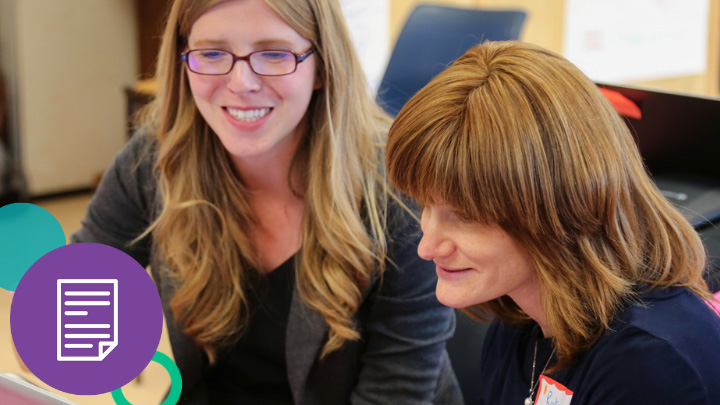No one knows for sure what next year will bring – whether students will be in the classroom, online, or a hybrid of the two – but we know we need to start planning. As an interim principal and BetterLesson leadership coach, I have first-hand knowledge of the ambiguity and angst regarding how to plan for the 2020-2021 school year. Even while the science changes and states implement new and revised plans on a regular basis, school leaders must work with what is known. It is easy to focus on logistics, yet we know that education is a people business. The four steps below provide an intentional approach to communicating and collaborating with your staff and community. Attending to stakeholders can ease some of the anxious feelings that may exist when logistical questions cannot be answered.
1. Facts
The first step in messaging to school and community stakeholders is providing them with facts that demonstrate what was accomplished during your school’s closure. For example, information regarding meal deliveries, number of virtual meetings, number of home visits, community involvement, types of social-emotional supports that were provided, and precautions that are being implemented can serve as important talking points before school reconvenes.
2. Feelings
It is likely that our stakeholders are experiencing a mix of emotions about the return to school: anxiety about new health and safety routines, angst about friendships and social connections, sadness about leaving the safety of home – or frustration about needing to stay there, ambiguity regarding schools possibly opening and closing over time, and wondering how to manage potential learning gaps. Knowing that these feelings exist means we can acknowledge them, invite suggestions, and create plans for addressing them. Forming a team of employees to address questions and create plans for different teaching and learning scenarios can empower others. Initial plans may focus on how to welcome back students and families in virtual and in-school scenarios, for example.
3. Pictures as Symbols
Showing and telling are important for communicating information. Leadership teams can begin identifying pictures or symbols that represent the strength of their organizations and how these strengths will be used to support members within the school community in the near future and throughout the school year. During the coronavirus crisis #together became a simple and powerful message for how we should confront COVID-19. Images and symbols that represent how your team will work #together to welcome school community members back to school could serve to communicate a powerful and compelling message. Relying on your district and/or school building values can be a place to start. For example, in the district where I am currently working, “Safety, Respect, and Responsibility” are core values. Using these as the foundation for messaging can reinforce concepts that are familiar to stakeholders.
4. Storytelling
Humans have a bias toward stories and leadership teams can develop a story to describe the past, present, and future and how their school communities were key in managing their school closures. Story elements might include school community members and varied events, but the story should serve to show how people worked together to confront the unexpected change that led to learning at home and how this togetherness will be critical to moving forward. Ideally, the story would include facts, feelings, and hope for all stakeholders as they anticipate the 2020-2021 school year.
School closures occurred quickly, so leadership teams had to react without much time for planning. While we may not know exactly what school will look like in the fall, we do know that that day will be coming. It is important for leadership teams to begin planning so stakeholders can feel assured that back-to-school will be done thoughtfully and safely.
BetterLesson supports school and district leaders as they face the challenge of creating flexible, equitable, student-centered learning environments – whether learning happens in-school, online, in a hybrid model, or as conditions change over time.
Explore Learning Experiences






